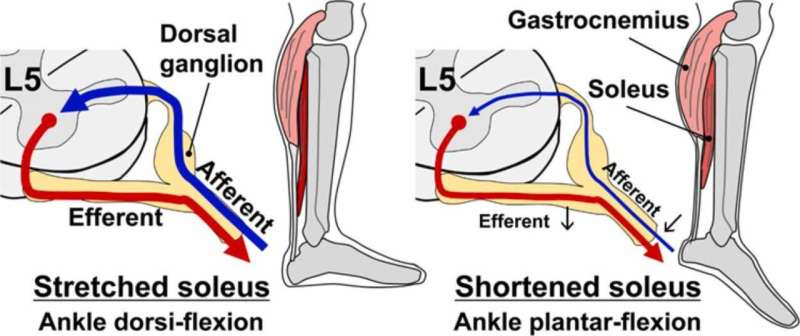So how can astronauts avoid these neuromuscular problems?
A team of researchers from Japan led by Dr. Yoshinobu Ohira of Doshisha University, Japan, set out to find the answer. They studied the responses of neuromuscular properties to gravitational unloading and produced research-based insights into how astronauts can avoid neuromuscular problems during an extended spaceflight. This review was published in Neuroscience & Biobehavioral Reviews in May 2022.
The team reviewed how the morphological, functional and metabolic properties of the neuromuscular system respond to lowered anti-gravitational activities. They looked at human and rodent simulation models first and also saw how afferent and efferent motoneuron activity regulated neuromuscular properties. Their review suggests that afferent neural activity (which involves the signals sent from skeletal muscle to the central nervous system during muscular activity) plays a key role in regulating muscle properties and brain activity.
Inhibiting anti-gravitational muscle activities results in remodeling of the sarcomeres (which are the structural unit of muscles), resulting in a decrease in their number, further causing a decrease in force development eventually leading to muscular atrophy. A reduction in the amplitude of the electromyograms in anti-gravitational muscles, namely the soleus and the adductor longus, is also seen. This indicates that exposure to low-gravity environments affects not only the muscles but also the nerves.
Gravitational unloading causes deterioration of motor control, seen as impaired coordination of antagonist muscles and altered mechanics. Walking difficulty was also observed in crews after spaceflight, although they exercised regularly on the ISS. Astronauts aboard the ISS are required to use treadmills, bicycle ergometers, and resistance training equipment to counter the effect of reduced gravity on the neuromuscular system and safeguard their physical health. However, these exercise-based countermeasures are not always effective in preventing certain unwanted neuromuscular changes.
Additional challenges arise when astronauts are exposed to a microgravity environment for six months or more, for example, on their way to or from the planet Mars. This review, therefore, has major implications in the area of space research, with special emphasis on astronaut wellness (recommendations for which are mentioned by the authors).
Changes in muscular properties due to gravitational unloading may be related to a decrease in neural activity, as well as contraction- and/or stretch-dependent mechanical stress. Stimulating the soleus muscle adequately seems to reduce chances of its atrophy. So while exercising, astronauts should walk or slowly run with rear foot-strike landing (using a bungee cord would help, too). Periodic passive stretching of the soleus also seems to be effective. So information from a unique perspective, as discussed in this review, may play an important role in the development of appropriate countermeasures against neuromuscular problems for future long-duration human space exploration missions.
Explore further



